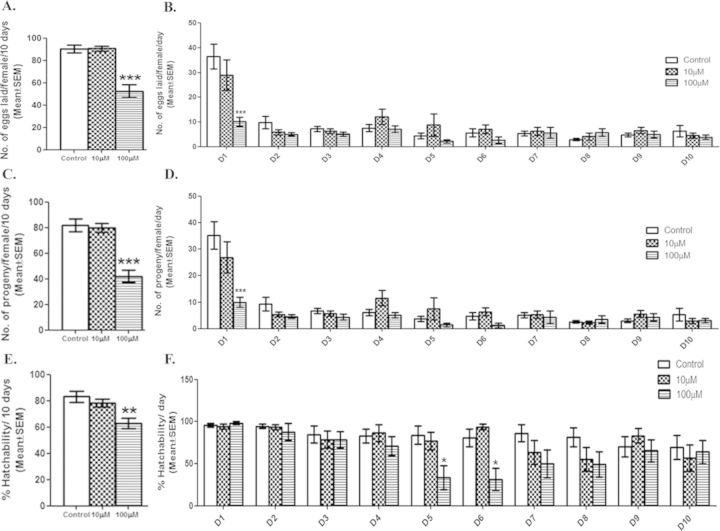FIG. 2.
Reduced reproductive performance of males exposed to DBP during development. The effect of DBP on the reproductive performance of exposed males was analyzed by mating control or exposed males to wild-type virgin females. We measured (A) the overall fecundity (number of eggs laid/ female over a period of 10 days) of females mated to control or exposed males (10 or 100μM DBP) and (B) daywise fecundity with transfer of mated females to fresh food every 24 h for 10 days (D1–D10). Subsequently, we scored these vials for the (C) overall fertility (number of progeny/female/10 days), and (D) daywise fertility of females mated to males exposed to 10 or 100μM DBP or their controls. We determined (E) overall percentage hatchability based on the proportion of eggs that reach adult stage and (F) at 24 h intervals for 10 days. The significant differences in fecundity, fertility and percentage hatchability between controls and exposed groups are denoted by *p < 0.05, **p < 0.01 or ***p < 0.001. All experiments were repeated three to four times (N = 15–20 males/mates per replicate/group).

